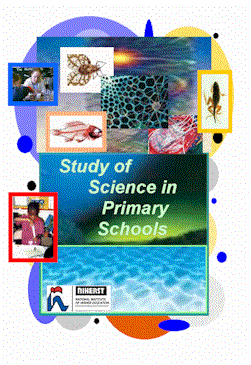
This report focuses on the qualification of principals and teachers and the availability and adequacy of material resources necessary for the teaching of science in primary schools. Data have also been compiled on the difficulties that teachers encounter in the teaching of various strands in the science curriculum together with information on teaching methods employed and assistance required to improve science learning.
The empirical data presented in this publication should inform evaluation and decision-making on primary school science.
Summary of Main Findings
Data Highlights
- Principals
- The survey data show that the male to female ratio of principals was 1:1.6 in primary schools.
- Sixty six percent (66%) of the primary school principals had obtained an O'Level pass in Mathematics.
- Of the sciences, 34% of the principals had an O'Level pass in at least one of Biology, Chemistry, Physics or Integrated Science. However, qualification by subject ranged from 4% in Integrated Science to 25% in Biology.
- Sixty three percent (63%) of the principals had a Teacher's Diploma and 20% a B.Ed. degree.
- One half of all principals (52%) acquired administrative training.
- Only one quarter of all schools (25%) had science rooms; 4% were well equipped and 10% reported an adequate supply of materials.
- Ninety two percent (92%) of the schools had computers but only 14% had access to the Internet. On average, there were 5 computers per school and 50 students per computer.
- Communication equipment including photocopier, television, video and cassette player was available in 80% and over of all primary schools.
- Most principals (83%) considered teaching methods as the key priority area in science education, followed by problem solving (61%) and science processes (57%).
- Teachers
- The male to female teacher ratio in primary schools was 1:1.8, similar to that of principals as shown earlier. By standard, however, the male to female teacher ratio was 1:2.6 in standard two compared with an even gender distribution in standard five.
- Most teachers (84%) had acquired O'Level/C.X.C. qualification in Mathematics.
- Of the sciences, 49% of all teachers had an O'Level/C.X.C. pass in Biology, 29% in Chemistry, 18% in Physics and 7% in Integrated Science. Sixty two percent (62%) had a pass in at least one of the above subjects.
- Including all schools, less than 10% of the primary school teachers had an A'Level pass in Mathematics or any of the sciences.
- Ninety percent (90%) of all teachers held professional qualification of mainly the Teacher's Diploma.
- More than one half of the teachers (55%) indicated that the science texts were inadequate. As an improvement, 47% stated that textbooks should be in agreement with the syllabus and 42% suggested they should contain more activities/assessment exercises.
- Only 12% of all teachers conducted experiments in laboratories. A larger proportion of private primary school teachers (27%) had laboratories at their disposal, compared with government (16%) and government assisted institutions (8%).
- The majority of teachers (54%) found structure and mechanisms to be the most difficult strand in the science curriculum to teach.
- Science and composition were reported as difficult to teach by 50% of the teachers.
- Experiments/demonstrations were identified as effective in understanding science while examples in textbook were considered the least effective.
- More than 40% of the teachers required assistance in teaching methods associated with science education.
- Sixty two percent (62%) of all teachers had attended science workshops. Approximately one third (29%) had attended in 2002 and 2003 respectively.
- By attending science workshops most teachers (75%) benefited from the exposure to new teaching techniques. However, in applying the content of workshops, teachers experienced problems of time, materials and accommodation. In addition, over 80% of the teachers indicated that the workshops' topics were not applicable to the syllabus, were unsuitable for the age group and not simple enough to teach.
- Teachers indicated a decline in interest in science amongst teachers and students as the subject was discontinued in the Secondary Entrance Assessment Examination (S.E.A.). Fifty nine percent (59%) responded positively for the re-introduction of science in S.E.A.
- The results of this study indicate that the infrastructure, including qualified personnel and material resources, necessary for science education in primary schools, is manifestly deficient.
- The issue of relevance of textbooks and workshops with the science curriculum should also be reviewed.






